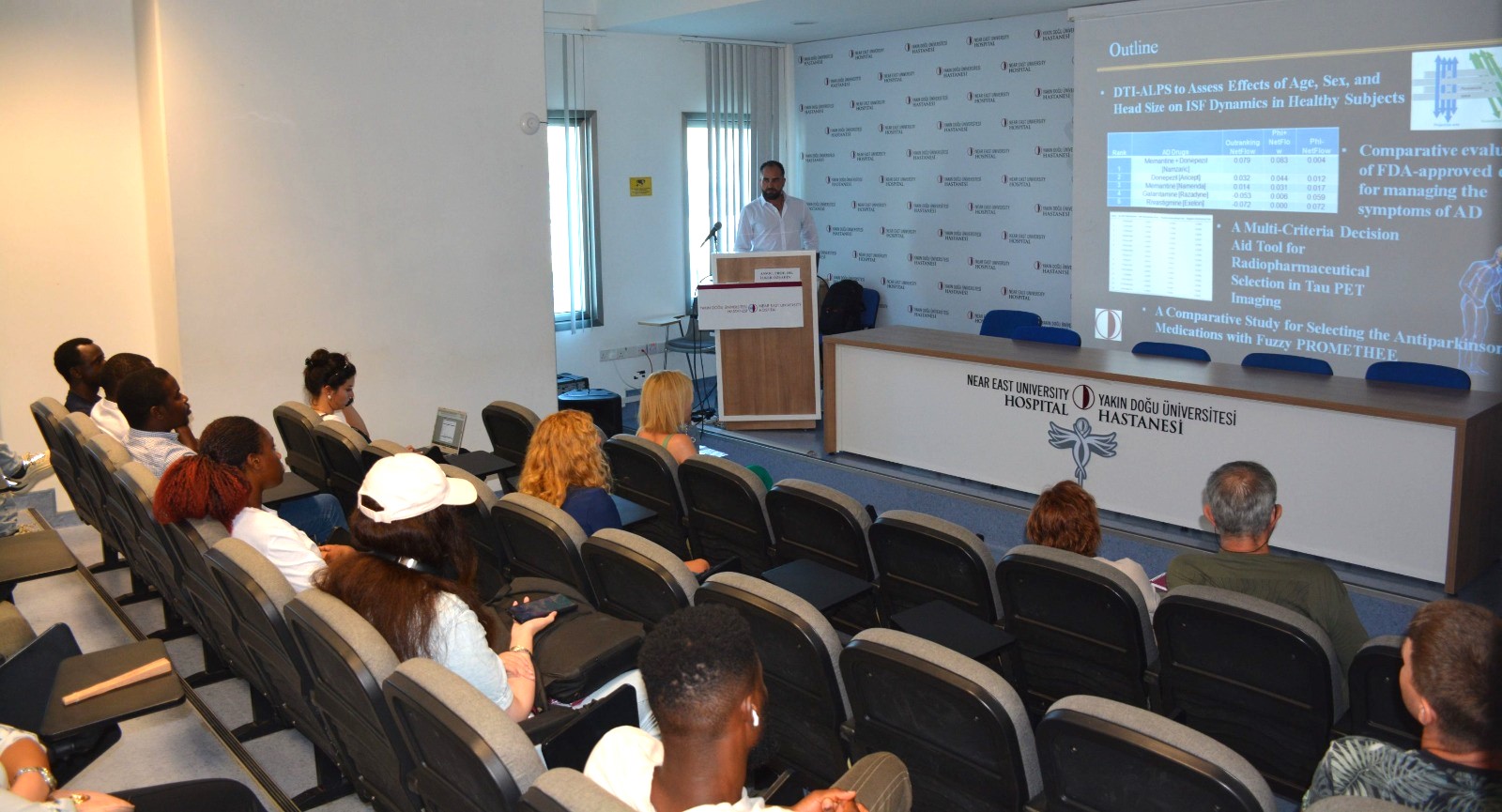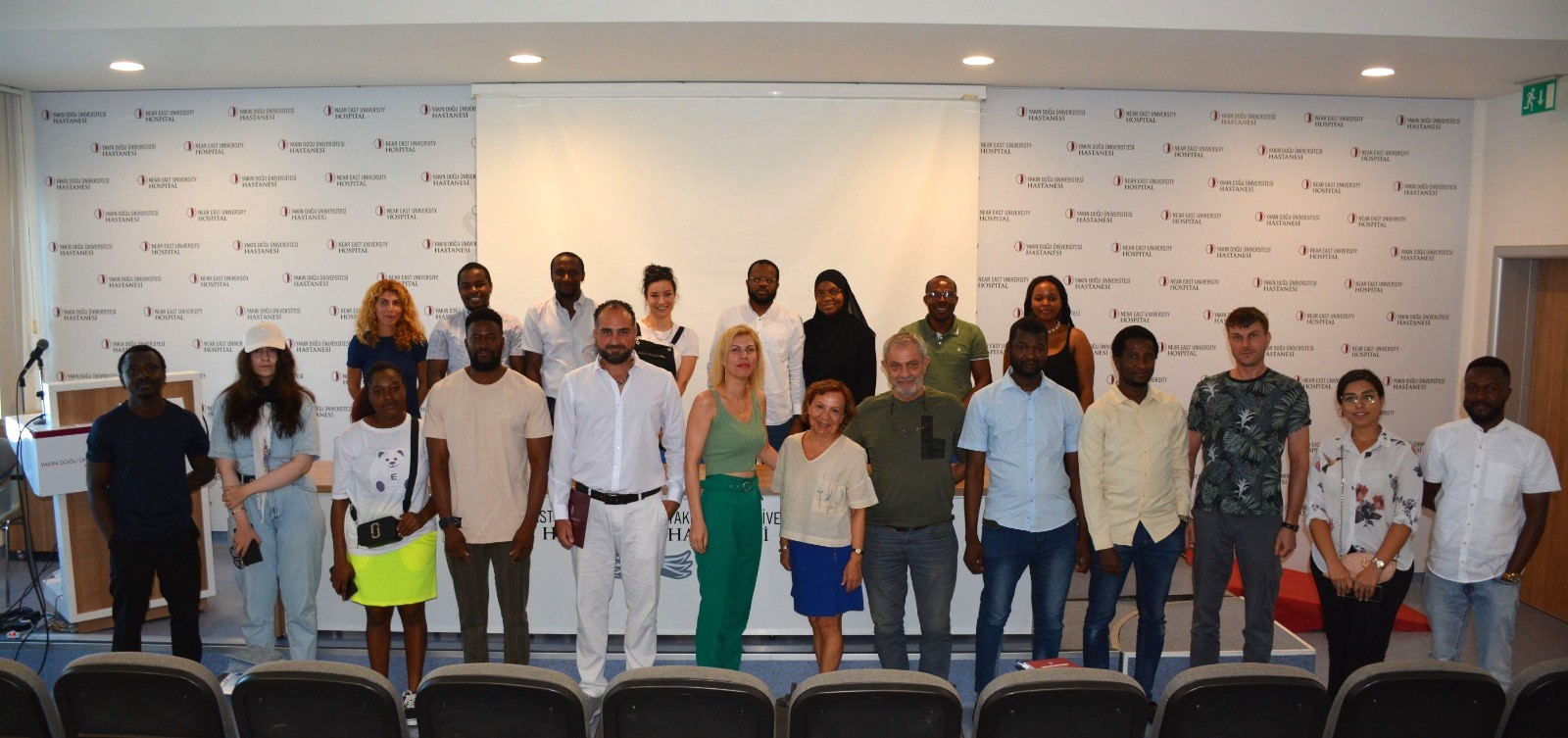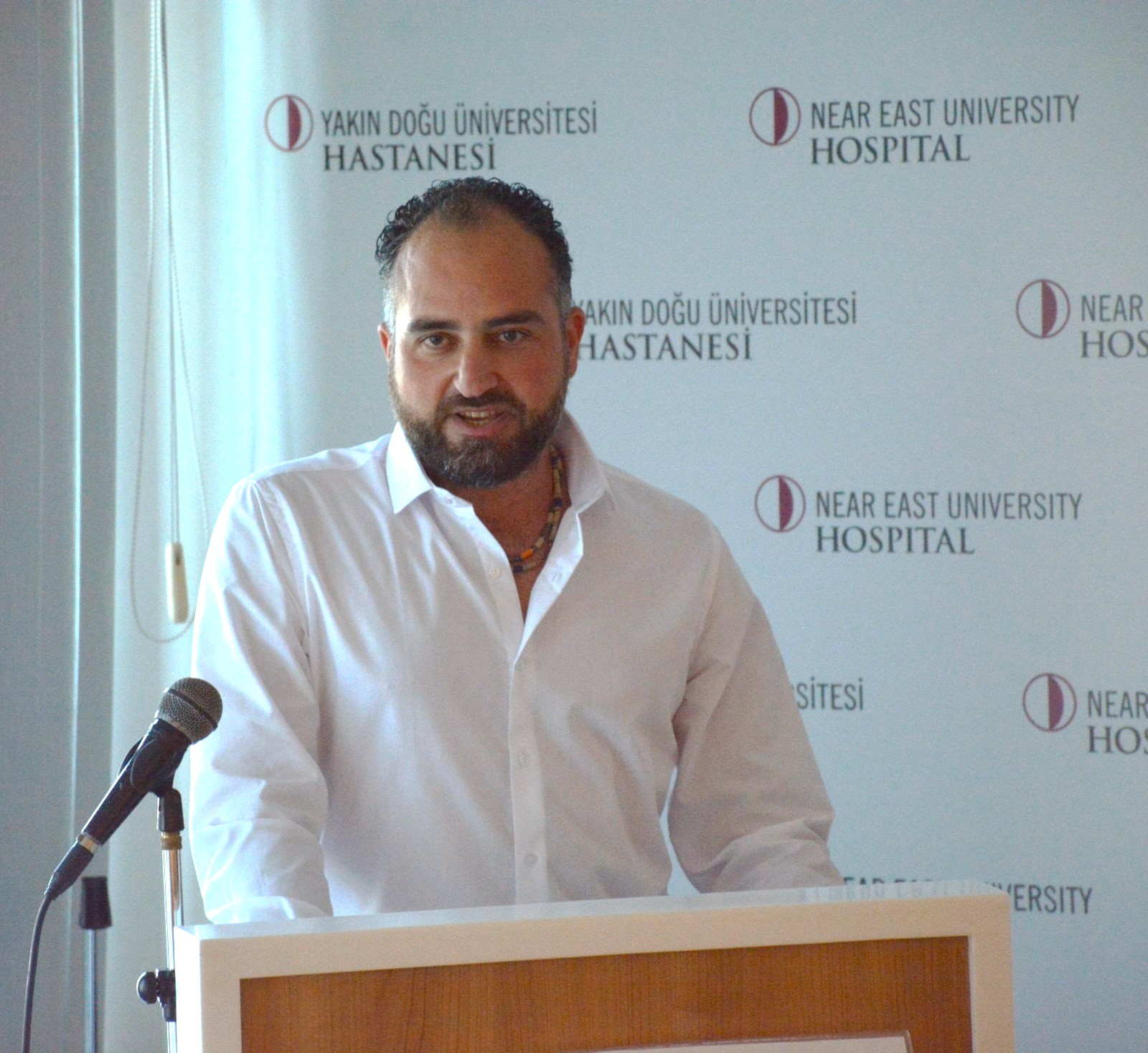
The seminar titled “Unraveling Neurodegenerative Changes: From Microglial Activation to Glymphatic Dynamics in Alzheimer’s Disease and Innovations in Imaging” organized by the Near East University Center for Operational Research in Health addressed the latest developments in the understanding and treatment of neurodegenerative diseases.
The seminar, which was carried out with intense participation, focused on changes in brain cells in Alzheimer’s disease and innovative imaging methods. The seminar examined the developments in the diagnosis and treatment of neurodegenerative diseases characterized by progressive damage and loss of nerve cells. In addition, it was emphasized that these diseases cause functional disorders in the brain and nervous system, and predictions were shared regarding future research and treatment trends. The seminar, given by Assoc. Prof. Dr. İlker Özşahin, a researcher at the Near East University Center for Operational Research in Health, was moderated by Prof. Dr. Dilber Uzun Özşahin, a faculty member at the Center for Operational Research in Health.
There is no definitive treatment!
Stating that Alzheimer’s disease is a progressive disease that affects memory and other cognitive functions and is known as the most common type of dementia, Assoc. Prof. Dr. İlker Özşahin, a researcher at the Near East University Health Operations Research Center, provided information about the diagnosis and treatment of the disease and evaluated the effects of age and gender on Alzheimer’s. Also emphasizing the role that drug treatments and supportive care play in managing the symptoms of the disease, Assoc. Prof. Dr. İlker Özşahin said, “Although there is no definitive treatment for Alzheimer’s disease, symptoms are tried to be managed with various methods such as drugs, lifestyle changes and supportive treatments. These treatments aim to slow down the progression of the disease and increase the quality of life of patients.” Stating that the risk factors for Alzheimer’s disease vary in a wide range from unchangeable elements such as genetics and family history to changeable factors such as cardiovascular health and lifestyle choices, Assoc. Prof. Dr. İlker Özşahin said, “Newly emerging risk factors and protective factors may also play a role in the development of the disease.”

1 in 9 people aged 65 and over have Alzheimer’s!
Assoc. Prof. Dr. İlker Özşahin, who shared the increasing prevalence of Alzheimer’s disease worldwide with statistics, said, “This disease accounts for 60 to 70 percent of dementia cases affecting more than 55 million people worldwide. While the risk of the disease increases with age, Alzheimer’s is seen in 1 in 9 people aged 65 and over. Approximately one-third of people aged 85 and over are also affected by this disease.”

Two-thirds of cases are women
Assoc. Prof. Dr. İlker Özşahin touched on the fact that although the clinical diagnostic accuracy of Alzheimer’s disease is around 85 to 90 percent, diagnosis can be difficult in the early stages. Stating that approximately 10 million new cases of dementia are diagnosed worldwide each year, Assoc. Prof. Dr. İlker Özşahin said, “Women are disproportionately affected by this disease, accounting for approximately two-thirds of cases. Alzheimer’s disease is the 7th most common cause of death worldwide. After diagnosis, the average life expectancy varies between 4 and 8 years, while some patients can live up to 20 years.”
Modern and advanced imaging techniques are used!
Finally, Assoc. Prof. Dr. İlker Özşahin shared predictions about the economic burden of Alzheimer’s disease and future research and treatment methods for this disease, and revealed various research areas aimed at better understanding and managing the disease. Assoc. Prof. Dr. Özşahin said, “The annual cost of dementia worldwide is estimated to exceed 1 trillion dollars. In the diagnosis and follow-up of these diseases, modern and advanced imaging techniques such as Magnetic Resonance Imaging (MRI), Computed Tomography (CT), Positron Emission Tomography (PET) and Diffusion Tensor Imaging (DTI), are used as each provides different information about the brain and nervous system.”